How to water eggplants in a greenhouse?
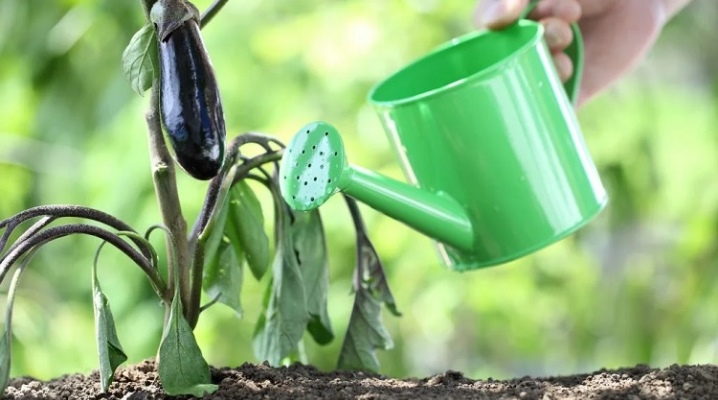
Eggplant is one of the favorite vegetable crops of Russians. Dishes made from this blue-blue vegetable are not only tasty, but also healthy. Despite its popularity, the agricultural technology of eggplant is quite difficult, so many gardeners refuse to grow it, fearing to fail. And completely in vain. To grow this wonderful vegetable, you need a little: knowledge, creation of suitable conditions, adherence to the rules of care and optimism.
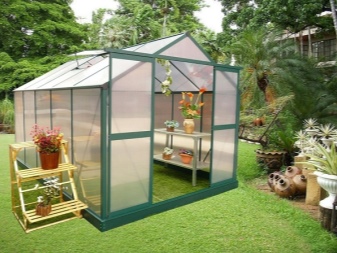
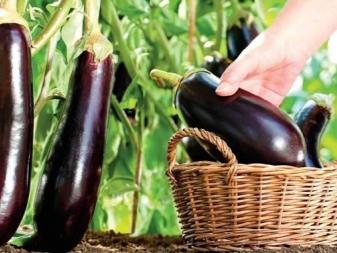
Water requirements
Eggplant is a native of hot India. In the harsh Russian conditions, you need to make every effort to get a good harvest of this tasty and nutritious fruit. The chances of success are increased by growing the vegetable in a greenhouse environment. So the plant will be well protected from frost, drafts, dry air and lack of light. In addition, in a greenhouse, it is easier to control the temperature regime, which should not be lower than 15 degrees and higher than 32, and the nutritional value of the soil, to which the eggplant is very sensitive. However, the main factor in the successful cultivation of eggplants is the correct watering of the root zone of the plant and the humidity of the habitat.
For watering eggplants growing in a polycarbonate greenhouse, you must use soft, settled water. However, it should not be cold. The best option is irrigation with rainwater, which is specially collected in containers and heated in the sun to a comfortable temperature of 21-23 degrees. For most horticultural crops, watering with cold water from a tap, borehole, or well is not a significant factor. But not for eggplant.
Watering with cold water will sooner or later lead to the fact that the plant will develop poorly, and the set flower stalks will simply fall off.
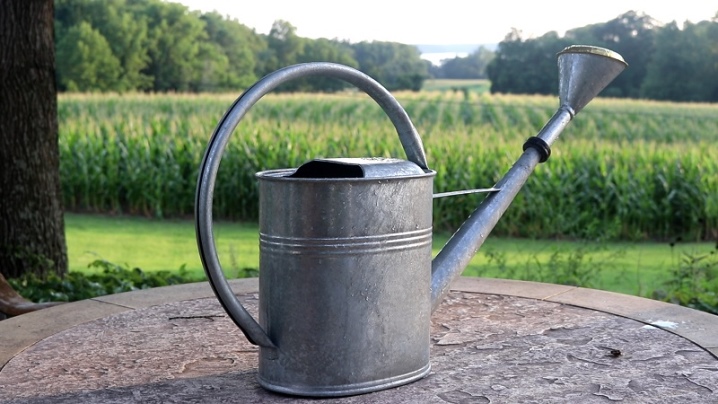
Watering rates and frequency
Because eggplant has a well-developed root system and large leaves, it requires more frequent watering than its closest relatives in the nightshade family. So, one bush growing in a greenhouse requires at least 4-5 liters of water. At the same time, in order to avoid burns, moisture should be avoided on the leaves.
The frequency of watering is regulated depending on the greenhouse climate. It should be borne in mind that with the existing high humidity in the greenhouse, the soil dries out slowly. In this case, even a slight overflow will contribute to the development of fungal diseases and the rapid death of the plant. Drying out the soil surface will also harm the plant. Skipping the application of moisture just a couple of times can have dire consequences for a blue-boiled vegetable. The first sign of insufficient watering is curling and yellowing of the leaves, as well as wrinkling of the flowers.
To understand how often an overseas fruit should be watered, you need to take into account the existing greenhouse conditions: soil drying rate and moisture. Since each greenhouse has individual characteristics, then eggplant watering will have an individual regime.
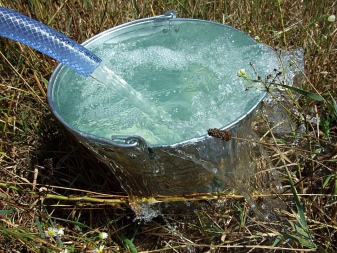
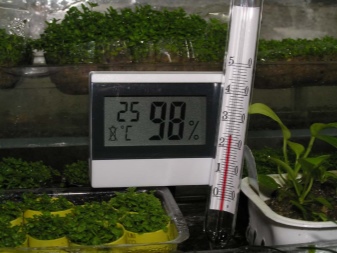
After disembarking
Since the growing season of eggplant is quite long - 90-150 days (depending on the variety), it is advisable to use the seedling method to obtain the harvest of this garden crop. Planting seeds for seedlings is usually carried out in late February-early March, and planting of young bushes in greenhouse soil occurs only when the danger of night frosts has passed.The survival rate of seedlings depends on how correctly watering will be organized during this period. The general rules are:
- first of all, it is necessary to equip the holes, for this, holes are dug 15 cm deep and are well spilled with warm water;
- then seedlings are placed in the prepared holes along with an earthen clod and sprinkled with soil;
- after the young bush is in its permanent habitat, it must be irrigated from a sprayer.
It should be remembered that the first full watering of eggplants is carried out only on the fifth day after planting the seedlings (1.5-2 liters of water). This is due to the fact that the plant does not tolerate transplanting well, and must adapt to a new place of growth. Otherwise, a capricious vegetable may not survive the shock of changing conditions.
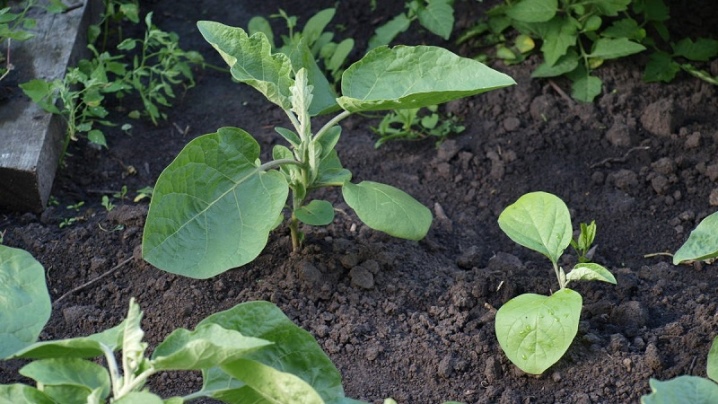
During flowering
During the formation of buds and the formation of ovaries, the plant needs more moisture. Thus, the optimal mode of adding moisture is 1 time in 3 days. In this case, the amount of water must be at least 4 liters. During this period, it is advisable to add a second top dressing to stimulate the formation of flowers (the first top dressing is carried out 15-20 days after planting the seedlings in the ground). Usually, a universal fertilizer is used for this or in the form of a potassium-phosphorus complex for fruit crops.

During fruiting
As the ovaries form and the fruits ripen, the watering regime also changes. During this period, it is critically important to prevent waterlogging of the soil. Excess moisture can cause rotting of all parts of the plant, starting with the root system. Besides, excessive watering can contribute to the development of fungal diseases of young fruits. On average, during the fruiting period, eggplants must be watered once every 8-10 days with the same amount of water (4-5 liters). If we allow the "water starvation" of the plant, then this can lead to the fact that the size of the fruits will be significantly less than the norm.
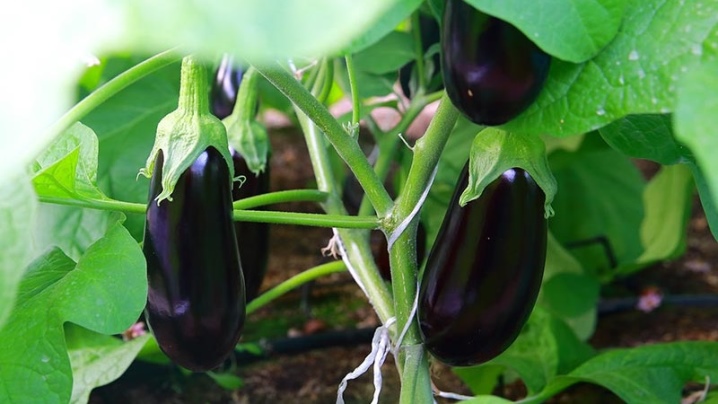
Irrigation methods
There are several ways to water eggplants growing in greenhouse conditions. Among them:
- manual;
- hose;
- drip;
- organization of a watering channel.
With the manual method of irrigation, a regular watering can is used without a spray. This simple method allows you to control the amount of water intended for each individual bush. There is only one drawback of this irrigation method: it is very laborious and requires significant physical effort. In short, this method is considered almost ideal for watering a small number of bushes. Hose irrigation is not the best option for eggplant. Since the water enters the hose from a well or water supply, its temperature is much lower than that required by eggplants. Cold water is contraindicated for this thermophilic plant so much that it can lead to its death. Another disadvantage is the inability to control the flow of incoming water.
Drip irrigation is considered the most optimal for eggplant:
- firstly, with this method of irrigation, moisture enters the soil directly, which excludes it from getting on the leaves and flowers of the plant;
- secondly, drip irrigation of eggplants can be carried out at any time of the day without fear of burns;
- thirdly, having organized a drip system in the greenhouse once, it can be used for several seasons in a row.
The installation of a drip irrigation system is not as difficult a task as it might seem at first glance. In any garden supermarket, you can purchase a ready-made drip irrigation system and mount it taking into account the individual characteristics of the greenhouse. If this is not possible, ordinary plastic bottles can be used for drip irrigation. The irrigation canal is a shallow furrow dug along the eggplant ridge, from which there is an individual branch to each bush. All you have to do is place the hose at the beginning of the furrow and open up the water.
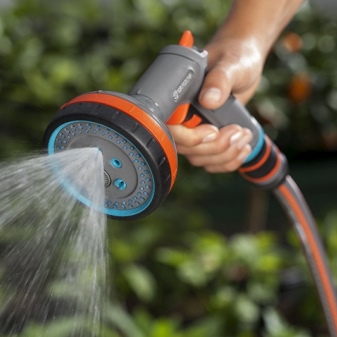
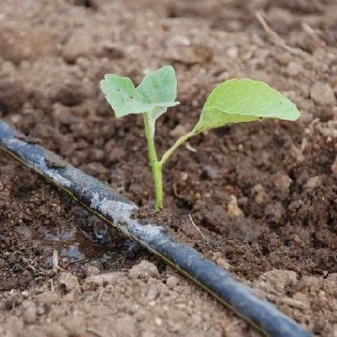
Useful Tips
Every gardener has his own secrets to successfully growing eggplants. They are happy to share some of them.
- Each stage of the eggplant growing season has its own watering regime. To achieve a good harvest, this should not be neglected.
- Sprinkling, which is used for watering most horticultural crops, is categorically unsuitable for eggplants grown in a polycarbonate greenhouse.
- The use of mulch to prevent moisture evaporation in greenhouse conditions is unacceptable. This can lead to the activation of putrefactive processes in the root system.
- Loosening and removing weeds prevents the formation of soil crust and improves the moisture and air permeability of the soil. For this, rakes with frequent short teeth are used. In order not to damage the root system, the soil should be loosened no deeper than 3-5 cm.
- At high humidity, the ability of plants to pollinate significantly deteriorates. Therefore, the average moisture content in a greenhouse where eggplants grow should not exceed 60%. If the humidity is still higher, then it is necessary to arrange regular ventilation of the greenhouse.
- Lack of light, combined with waterlogged soil, can cause the plant to shed leaves and flowers. Therefore, if cloudy weather is established, watering should be reduced.
- To avoid the attack of harmful insects, eggplants should not be placed in a greenhouse where tomatoes and peppers are planned to be grown.
Growing eggplants is not easy, but quite exciting. The highest reward, after all the effort, will be a dark blue or purple fruit with outstanding taste and undeniable health benefits.
It is important not to stop on your way to a rich harvest and follow the rules for watering this plant in a greenhouse.
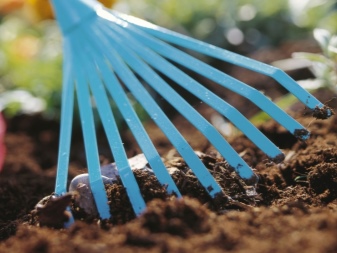
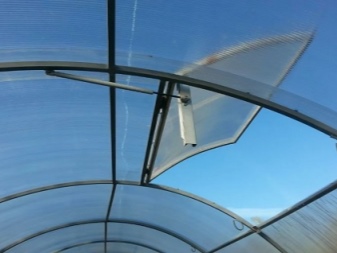
In the next video, you will find three golden rules for growing eggplant.













The comment was sent successfully.